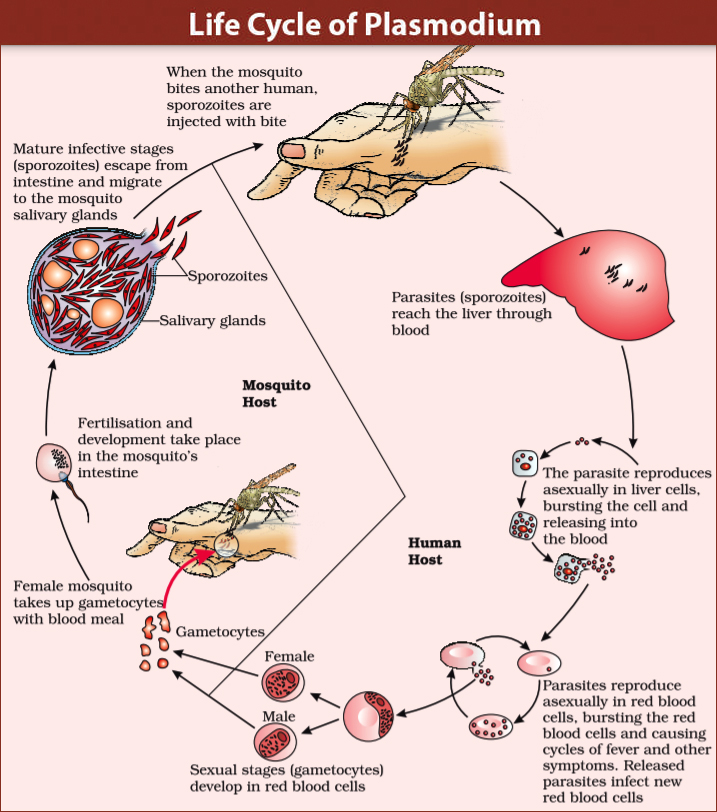Science & Technology
P Ovale Malaria
- 12 Dec 2020
- 4 min read
Why in News
Recently a not very common type of malaria, Plasmodium ovale, has been identified in a jawan in Kerala.
- The soldier is believed to have contracted it in Sudan, where Plasmodium ovale is endemic.
Key Points
- About:
- Plasmodium ovale is one among the five kinds of malarial parasites — Plasmodium falciparum, Plasmodium vivax (the commonest ones), Plasmodium Malariae, Plasmodium Ovale and Plasmodium Knowlesi.
- It is termed ovale as about 20% of the parasitised cells are oval in shape.
- The parasite can remain in the spleen or liver of the body for a long time, even years, after the mosquito bite, and the person could become symptomatic later.
- Symptoms:
- Symptoms include fever for 48 hours, headache and nausea, and it rarely causes severe illness.
- Similar to P vivax:
- P ovale is very similar to P vivax and the treatment modality is the same as it is for a person infected with P vivax.
- Distinguishing between P vivax and P ovale may be tricky and can be differentiated only through careful detection.
- Prevalence:
- P ovale malaria is endemic to tropical Western Africa. It is relatively unusual outside of Africa and, where found, comprises less than 1% of the isolates.
- It has also been detected in the Philippines, Indonesia and Papua New Guinea, but is still relatively rare in these areas.
- Transmission in India:
- According to the National Institute of Malaria Research (NIMR), the Kerala case could be an isolated one and there are no recorded cases of local transmission so far.
- Previously, too, isolated cases were reported in Gujarat, Kolkata, Odisha and Delhi. However, no local transmission has been recorded — which means these cases have been acquired.
- In India, out of 1.57 lakh malaria cases in the high-burden states of Odisha, Chhattisgarh, Jharkhand, Meghalaya and Madhya Pradesh in 2019, 1.1 lakh cases (70%) were cases of falciparum malaria.
- According to the recent World Malaria Report 2020, cases in India dropped from about 20 million in 2000 to about 5.6 million in 2019.
Malaria
- Malaria is caused by Plasmodium (a protozoan).
- Malaria caused by Plasmodium falciparum is the most serious one and can even be fatal.
- Life Cycle of Plasmodium:
- Plasmodium enters the human body as sporozoites (infectious form) through the bite of infected female Anopheles mosquito.
- The parasites initially multiply within the liver cells and then attack the Red Blood Cells (RBCs) resulting in their rupture.
- The rupture of RBCs is associated with release of a toxic substance, haemozoin, which is responsible for the chill and high fever recurring every three to four days.
- When a female Anopheles mosquito bites an infected person, these parasites enter the mosquito’s body and undergo further development.
- The parasites multiply within them to form sporozoites that are stored in their salivary glands. When these mosquitoes bite a human, the sporozoites are introduced into his/ her body, thereby initiating the events mentioned above.
Note
- It is interesting to note that the malarial parasite requires two hosts – human and mosquitoes – to complete its life cycle.
- The female Anopheles mosquito is the vector (transmitting agent) too.
- World Malaria Day is observed on 25th April.
- It can be noted that the World Health Organisation (WHO) officially endorses disease-specific global awareness days for only four diseases viz. HIV-AIDS, TB, Malaria, and Hepatitis.





